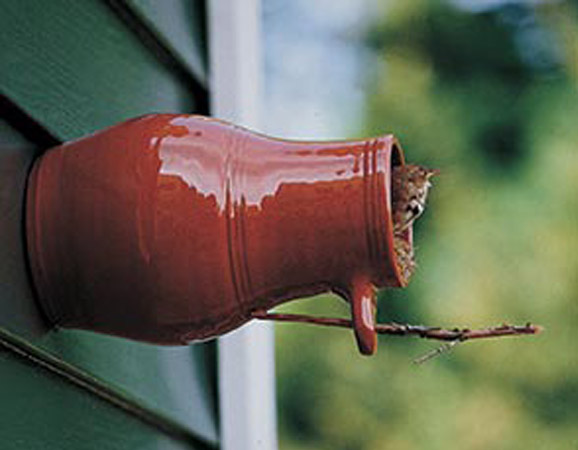
History of the Birdhouse
|
Birdhouses have been part of Western culture for hundreds of years in both North America and Europe. Over the centuries baskets and clay pottery were used as the initial birdhouses in Europe while birch bark was used in North America. The first use of man-made birdhouses in history was around the 15th - 16th century. In Turkey, birdhouses were built for sparrows and swallows during the pre-Ottoman period. They were made of bricks, tiles, wood, stone and mortar. Birdhouses in Turkey were often built into the façade of the building and complemented the architecture surrounding it. |
Native American Origins
|
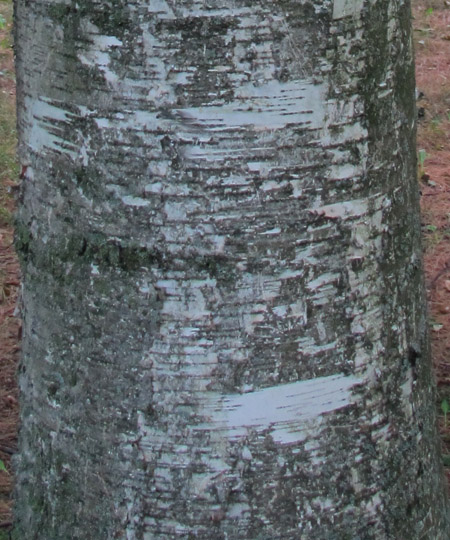 | 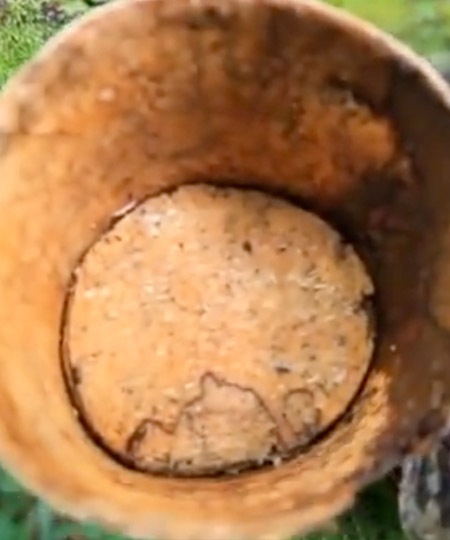 |
| Paper birch (Betula papyrifera), native to North America |
Birch bark cavity which could be used to create a birdhouse |
|
Birch bark was the main material used to build birdhouses by Native Americans along the east coast when English immigrants arrived in the 18th century. The purpose of these birdhouses was to shelter the birds from harsh weather and increase the number of birds in the area.
Fallen birch trees with a diameter of 5-6 inches would be cut in small sections of 6 - 8 inches. The heart wood would be removed from the bark by hitting and loosening the bark. The removed heartwood could be cut in slices and two of these slices could be pushed back into the roll of bark to be the top and bottom of the birdhouse. A 1-2 inch hole would be created in the bark to all a bird access to the inner cavity.
|
European Origins influencing North America
|
While we normally think of birdhouses as a way to protect nature and increase the amount of birds in our area, that was not always the case. Birdhouses in some places in Europe were used initially as a trap to capture eggs and even birds. These birdhouses were typically made of clay and were built like a vase; however, in most cases birdhouses have been used to protect wild birds from harsh weather and predators as well as provide a location to live.
When the early colonists came to Williamsburg, Virginia there were interested in attracting birds for pest control. Bird bottles about 8.5 inches long and having an entrance hole of 4" were turned horizontally and mounted on the side of buildings. These birdhouses were advertised in a 1752 paper and were found in an inventory list from 1746. Reproduced birdhouses are available through the Williamsburg Marketplace Online.
|
|
Why do birds use Nesting Cavities?
|
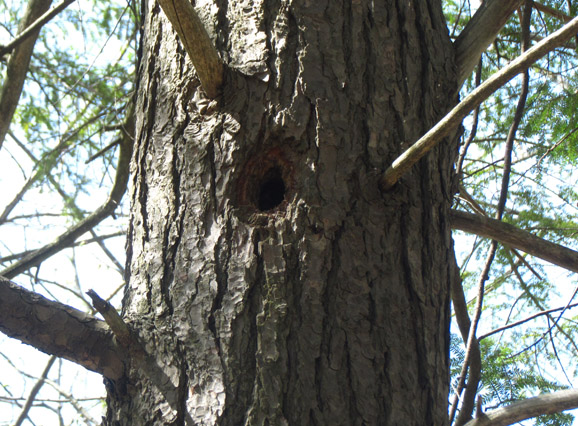 | | Nesting cavities created by woodpeckers |
|
Why do birds use birdhouses in general? Birds are looking for nesting cavities in which to build their nest. Song birds that use tree cavities are not capable of creating their own nesting cavities because their beaks are specialized for hunting insects or gathering seeds. In an undisturbed ecosystem songbirds such as wrens, chickadees and nuthatches look for tree cavities created by other birds such as woodpeckers.
Tree cavities provide shelter for birds from predators. There are two kinds of cavity nesters: those that create their own nesting cavities (primary cavity nesters) and those that use pre-existing cavities (secondary cavity nesters). Insects or pathogens have also been found to assist in formation of cavities that are used by cavity nesters.
|
The amount of forested land in North America has greatly decreased over the last 200 years due to agriculture and urbanization. Many trees that have nesting cavities are not structurally sound, and are cut down in to prevent damage to property. As a result, there is a shortage of suitable nesting sites for both primary and secondary cavity nesters. Birdhouses have been used as a solution to the lack of natural cavities.
Finding a birdhouse designed specifically for the favoured bird is key to success. Bird species prefer different nesting conditions, whether it is the size of the entrance hole or the height the birdhouse is placed off the ground.
Birdhouses and tree cavities are not always used for nesting, some birds and animals will take advantage of these homes in unfavourable weather. The owl to the right is using a wood duck nesting box to take shelter during a winter snow storm.
|
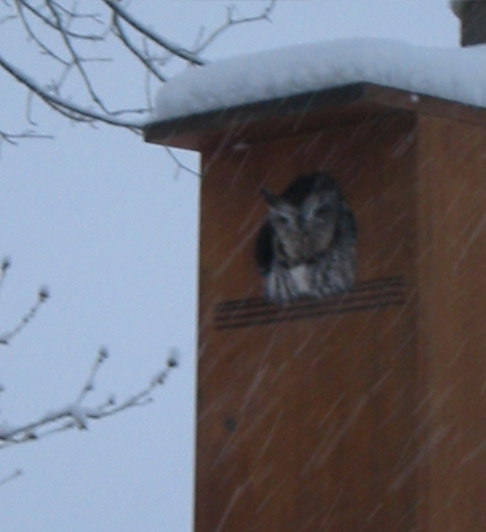 |
| Owl using a wood duck nesting box during a snow storm |
|
Sitemap | In Season | Products | Information | Store | Contact Us












